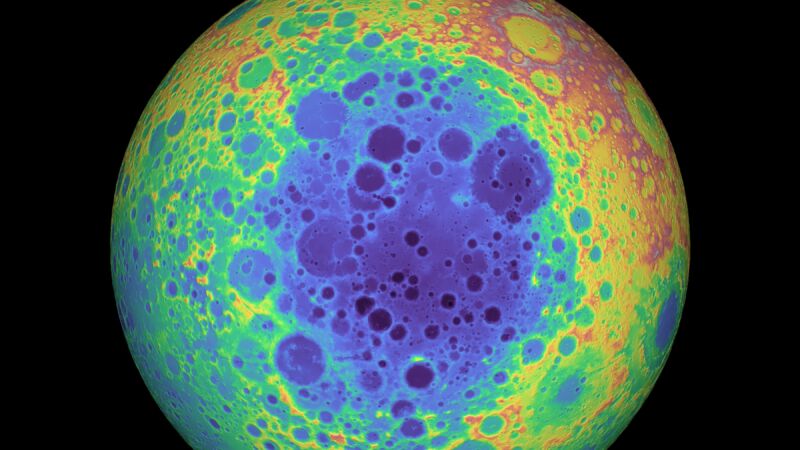
Enlarge / The blue area is the basin formed by the largest impact on the Moon. Additional craters have formed by subsequent impacts. (credit: NASA/GSFC/University of Arizona)
As the Moon coalesced from the debris of an impact early in the Solar System's history, the steady stream of orbital impacts is thought to have formed a magma ocean, leaving the body liquid. That should have allowed its components to mix evenly, creating a roughly uniform body. But with the onset of space exploration, we were finally able to get our first good look at the far side of the Moon.
It turned out to look quite different from the side we were familiar with, with very little in the way of the dark regions, called mare, that dominate the side facing Earth. These differences are also reflected in the chemical composition of the rocks on the different sides. If the whole Moon was once a well-mixed blob of magma, how did it end up with such a major difference between two of its faces? A new study links this difference to the Moon's largest impact crater.
A big crash
The South Pole-Aitken Basin is one of the largest impact craters in the Solar System, but again, we didn't realize it was there until after we put a craft in orbit around the Moon. All we can see from Earth are some of the ridges that are part of the outer crater wall. Most of the 2,500 kilometers of the crater itself extend into the far side of the Moon.
Read 9 remaining paragraphs | Comments
